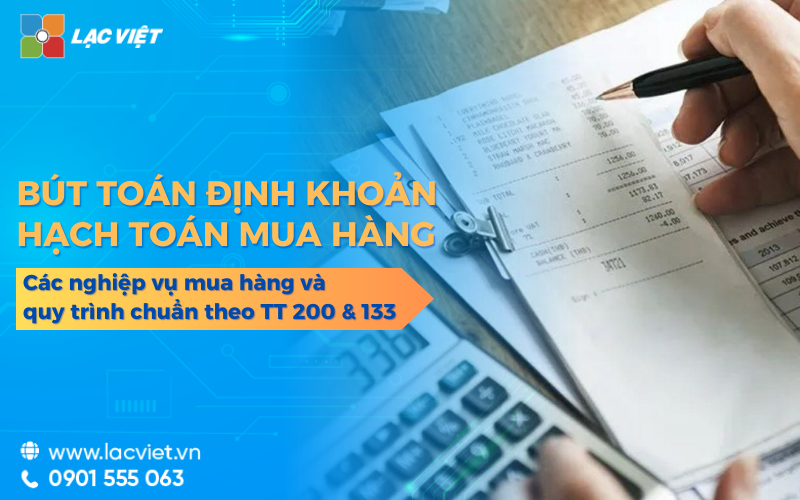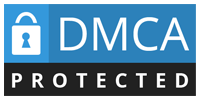In commercial transactions between business, trade discount is an important tool to help adjust price, boost sales, optimize cash flow. Understanding how accounting trade discount not only help businesses control costs in a transparent way, but also ensure the financial statements properly reflect the actual benefits from the transaction.
With respect to the organizations and enterprises are to find out information about accounting trade discount, the correct application of accounting principles to help:
- Avoid errors in revenue recognition and expense ensure compliance with accounting standards in Vietnam.
- Optimize cash flow, thanks for understand the value discount is applicable to customers or received from suppliers.
- Support debt management performance, in particular in the sector have a discount as high as retail, distribution or manufacturing.
The same Lac Viet Computing find out details in this article.
1. Understand overview of the trade discount
1.1 trade Discount is what?
Trade discount is the discount that the seller provided to the customer when buying goods in bulk, or according to the conditions agreement. Different payment discount, which is applied only when the customer early payment discount trading is often calculated directly on the selling price of goods.
Illustrative example: A business of selling electronic goods, apply 5% discount for orders from 1000 products or more. If the original sale of each product is 1,000,000 VND, business will fall 50.000 VND on each product to customers who buy in bulk. The accounting trade discount in this case helps accurately reflect the actual revenue and expenses of the business.
1.2 general principles
In accounting, trade discount is the discount price directly from the seller to the customer, should be recorded right to the revenue/cost to accurately reflect the economic benefits of the transaction. The main principles include:
| Ghi nhận doanh thu và chi phí | Time recorded |
|
|
Illustrative examples: Business sales 1,000 products, the price of VND 1,000,000/product, apply 5% discount for customers buying in bulk. Actual revenue recorded: 1.000 x (1.000.000 – 5%) = 950.000.000 USD.
2. Guide accounting trade discount according to each case
Case 1: sale Price on the invoice to include the discount trade (CKTM with each purchase)
In this case, the sale price on the invoice to reflect discount, i.e. revenue or expense was calculated based on the price after discount. Accountants do not need to set up accounting separately for the discount this helps save time, avoid cumbersome in bookkeeping.
Meaning of accounting
- Ensure revenue, cost reflects the actual value has to deal with customers.
- Help the organizations and enterprises are to find out information about accounting trade discount understand the mechanisms noted that no false data financial statements.
How to account with illustrative examples:
| Profession | The seller | The buyer |
| The account |
|
|
| Illustrative example | Business for sell 100 products, the original price of VND 1,000,000/products, has applied a 5% discount on the bill.
The account:
|
Value of goods: 95.000.000 VND (after discount).
The account:
|
Case 2: trade Discount after purchase or when the end of the program
In many cases, the trade discount is calculated aggregate after purchase or when the end of the promotion. Accounting need separate accounting to reflect the discounted value actually received.
If the discount amount smaller than the amount on the bill last/next
- Principle: the amount Of discount to be subtracted directly on the bill last or the next.
- Meaning: to simplify accounting, ensure revenues and expenses reflect the actual value without the need for multiple accounting complexity.
- Illustrative examples:
- Total cumulative discount: 20,000,000 VND
- Invoice value finally: 50.000.000 VND
- Accounting except directly on the bill: reducing revenue 20,000,000 VND
If the discount amount greater than the amount on the bill last or after the end of the program
In this case, the business needs to invoice adjustment decrease in revenue with the list of bills that need to adjust.
Pen mathematics, the sale (reduced turnover)
| Circular | How accounting |
| According to TT 200 |
|
| According to TT 133 |
|
Illustrative examples:
- Total cumulative discount: 120.000.000 VND
- Final bill: 50.000.000 VND
- The discount pass the final bill should invoicing adjust 70.000.000 USD.
- The account:
- Debt TK 5211 – 120.000.000 VND
- Debt TK 3331 – 5.700.000 VND
- Have TK 111/112 – 125.700.000 VND
Pen math you (the buyer to allocate the discount received)
| Case | How accounting |
| If inventory remains: decrease in inventory value | Have TK 152, 153, 156 – reduced value |
| If goods sold: reduce cost of goods sold | Have TK 632 – the Price of capital decreased |
| If goods have been in use for BUSINESS/Management/CONSTRUCTION: cost reduction respectively | Have TK 154, 241, 641, 642 – Cost reduction |
Illustrative examples:
- Inventory: 30.000.000 VND
- Goods sold: 50.000.000 VND
- Goods for management: 40.000.000 VND
The account:
- Have TK 156 – 30.000.000 VND
- Have TK 632 – 50.000.000 VND
- Have TK 642 – 40.000.000 VND
3. Errors frequently encountered when accounting for trade discount
In fact, business accounting, accounting and trade discounts are often arises many errors due to confusion between trade discount, payment discount, and discount sales. The recognition of wrong doing directly affect revenue, expenses, VATprofit, risk in audit or tax settlement. Therefore, accountants need to understand the principles of recorded time accounting and methods of accurate adjustment according to current regulations.

Mistake 1: Confusion between trade discount and discount payment
Trade discount is the discount for customers who buy goods in large quantities, while payment discount is the encourage customers to pay early.
Consequences: Recorded in the wrong account (for example using TK 515 instead 521) falsify revenue or finance costs affect the profit target on the report business results.
Tuning: Recording journal entries reversing entries wrong, then accounting in accordance with:
- Seller: Debt TK 5211 / Có TK 111, 112, 131
- The buy side: Debt TK 111, 112 / Have TK 156, 632 or 642 depending on the purpose of use of goods
Mistake 2: Not recorded discounting the right time
Many businesses recorded a discount when the end of the program instead of at the time of incurring obligation.
Consequences: financial statements do not reflect the true situation of revenue states current, causing deviations in assessing business performance, cash flow analysis.
Mistake 3: No bill adjustment when the discount is granted after many states
According to circular 78/2021/TT-BTC, if the discount is determined after the end of the program, businesses must make adjustment invoice sales tax, VAT respectively.
Consequences: Not billed adjust that business is not recorded, discount valid, may be excluded from the cost reasonable when tax settlement.
Tuning: Business need adjustment invoice according to the regulations of the tax authorities, with itemization of the bill related, at the same time accounting adjustment respectively on the ledger.
Mistake 4: missing allocate the discount the buyer
The purchaser is not clearly identify the goods have been sold or used, leading to allocate discount wrong cost object.
Consequences: cost of goods sold, cost of production or cost management is recorded wrong, falsifying business results.
Tuning: accounting for additional discounting in current, recorded in cost or decreases in revenue purchase the buyer/seller.
- Seller: Debt TK 5211; Have TK 131, 111, 112
- The buy side: Debt TK 111, 112; Have TK 632 or 156
4. Solutions support accounting trade discount the effect of the same software, LV-DX Accounting
In the context of the regulations on accounting – tax-day more closely, ensuring accounting of trade discount to the accuracy, timeliness requires not only compliance but also the factors that help business financial management efficiency. However, in many businesses, this process is still done manually, depends on the spreadsheet discrete, easy to errors when adjust or reconcile invoices.
Software, LV-DX Accounting of Lac Viet is developed to automate the entire process of accounting, including business, trade discount, buy-side/ sell-side. The system allows:
- Automatic updates collated evidence from the middle of discounting bills, debts and help minimize errors.
- Noted, the switch, adjust the pen math trade discount in the correct circular 200 and circular 133.
- Data connection with other modules such as sales, purchase, inventory, tax help ensure consistent and accurate across the entire financial system.
- Warning erroneous or duplicate transactions, help accountants fast processing of errors ensure financial reporting transparency.
If your business is looking for accounting solutions modern, safe, flexible, LV-DX Accounting will be the right choice to enhance the accuracy in accounting and optimize financial management.
“Sign up free demo software, LV-DX Accounting help accounting business trade discounts accurate, fast”
Implementing the right process accounting trade discount not only help business faithfully reflect revenue, expenses, but also contribute to improving transparency in financial operations. In the business environment is increasingly competitive, any business gain control over accounting data quickly – standard – safe will have the advantage in decision-making and governance funds.














